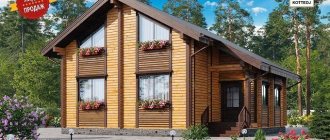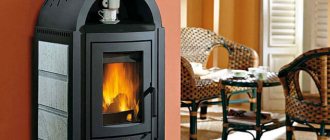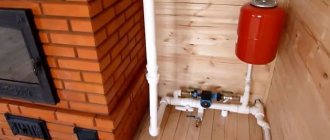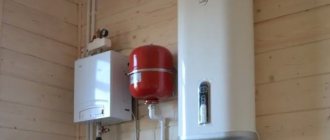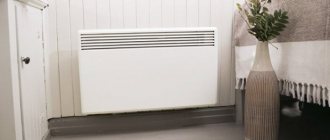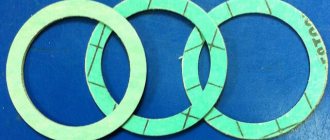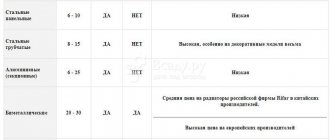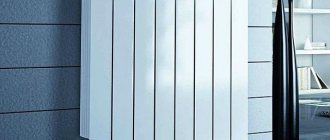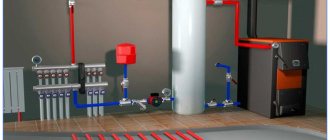The widespread increase in tariffs is causing a complete revision of the entire heating system. Many owners of houses and buildings are beginning to think about which radiators are better and more economical to use for heating.
The modern technology market offers consumers a fairly wide range of heating radiators. Models differ in design, power, and manufacturer. Heating appliances today are used in a wide variety of conditions.
The working conditions in the city central heating system are rightfully recognized as the most stringent. Therefore, in order to provide your home with warmth and comfort for a long time, you need to take the choice of a heating radiator seriously.
Design, principle of operation of aluminum radiators
Aluminum radiators are a complex-shaped structure based on aluminum tubes through which coolant flows from the heating system. Heat transfer plates are attached to the tubes. The shape allows the thermal energy received from the system to be radiated and heat to be transferred by air convection between the radiator plates.
Calling home heating batteries aluminum is not entirely correct; they are made not of pure metal, but of an alloy with a number of substances. The most common component is silicon.
Batteries for apartment and house heating systems made of aluminum alloy are made in two ways:
- Casting is a complex, labor-intensive method. Batteries are more expensive, but of better quality. The service life of the system is at least 15 years.
- Extrusion. The method is reminiscent of squeezing cream from a culinary cone into a mold. It is technologically simpler and therefore is used by manufacturers from Far Eastern countries. Heating batteries are quite cheap and look little different from injection molded ones. The downside is the poor quality of the walls and seams. The service life of batteries as part of the heating system does not exceed 10 years. They often fail after 2-3 heating seasons.
Some manufacturers apply electrochemical anodizing to the inner walls of radiators. Radiators are less susceptible to corrosion, the amount of hydrogen released from water is reduced (the anti-air vent cannot be excluded from the battery piping).
The number of sections made of aluminum alloys is usually even. They are connected by nipple adapters and integrated into the heating system using threaded connections. The flow of water is somewhat difficult. There are completely cast non-dismountable battery models. The number of sections cannot be changed. They are distinguished by a smooth inner surface, which simplifies the flow of coolant from the apartment or home heating system (often anodized).
Home heating battery made of aluminum alloys FONDITAL CALIDOR 500-100 B4
Characteristics of cast iron and aluminum batteries
For ease of visual comparison, the technical characteristics of heating devices are presented in table form:
Table 1. Average technical characteristics of cast iron and aluminum water heating radiators, sections with an interaxial connection distance of 500 mm
| Material of manufacture | Heat transfer of 1 section at ∆T=700C, W | Coolant operating pressure, kgf/cm2 | Maximum pressure, kgf/cm2 | Required value of the hydrogen index of the coolant (pH) | Internal volume of 1 section, liters |
| 1 | 2 | 3 | 4 | 5 | 6 |
| Cast iron | 90 – 150 | 6 – 12 | 12 – 15 | 6,5 – 9,0 | Up to 3.0 |
| Aluminum | 200 | 10 – 18 | 25 | 7,0 – 8,0 | 0,3 |
By design, aluminum products are produced in two modifications - collapsible (sectional) and monolithic; cast iron batteries are produced only in sectional versions. Installation of heating devices is carried out using a wall or floor method, and some cast iron models for floor placement are equipped with cast legs. Provided that operating conditions are met, aluminum radiators last an average of 20–25 years; cast iron products are the absolute record holder among batteries in this regard—they last up to 50 years.
Design and principle of operation of cast iron radiators
Radiators have a simple design that has been proven over many decades. Cast from gray cast iron. The internal clearances are large. The flow of water inside is not impeded, even with significant contamination.
Separate sections of cast iron heating radiators are connected by fasteners. To prevent leaks, they are sealed with heat-resistant rubber gaskets. A common design is the MC type. Collapsible, available in different sizes. Rare - solid cast. More often these are designer expensive models.
The internal volume of cast iron heating devices exceeds the volume of aluminum structures. This slows down complete heating and prolongs the period of heat release in the event of a central heating system shutdown. Cast iron is less thermally conductive. Advantageous features are chemical inertness, resistance to corrosion, and temperature changes in the system.
When properly connected to the system, cast iron house central heating batteries will last a long time, without repair or replacement of parts.
Unlike aluminum, cast iron can withstand freezing of the coolant. With careful, competent defrosting of the system there will be no consequences.
Cast iron, aluminum models
Comparison of cast iron and steel
Sometimes the question “which is better” when it concerns different types of heating batteries is not entirely correct. Often, heaters are simply used in different types of heating systems, so it makes no sense to compare their technical characteristics.
The question is which batteries are better, cast iron or steel, from the same category. A comparison of these devices will prove this:
| Parameters/1 section | Steel radiators | Cast iron batteries |
| Thermal power | from 317 W | from 120 to 160 W |
| Weight | from 7.8 kg | 0t 3.5 kg to 7 kg |
| Volume | from 3.3 l | 0.8 l |
| Design | panel | sections |
| Operating pressure | 8.7 bar | 9 Bar |
| Best before date | 10 years | 35 years |
| Coolant heating | +110 | up to +150 |
| Resistance to water hammer | No | Yes |
| Corrosion resistance | No | Yes |
As can be seen from the table, the question is not whether steel or cast iron batteries are better, but that the former perform well in autonomous systems, where there are no water hammers and the coolant is clean, and the latter - in conditions of central heating.
Steel panels have several disadvantages that their cast iron counterparts do not have:
- In case of a leak, you will have to repair or completely replace the entire panel, whereas with cast iron radiators you can replace the faulty section with another.
- The panels are connected to each other by a welding seam, and no matter how high-quality it is, under constant water hammer it can leak.
- Narrow channels for coolant, on the one hand, ensure a small amount of coolant in the device, which has a positive effect on its thermal power, and on the other hand, they quickly become clogged due to low-quality coolant in the central heating network.
- The cost of stainless steel devices is higher than cast iron. It is not advisable to install them in an apartment with central heating, but in a private house they will not only heat it effectively, but also decorate the interior.
If you have to replace old cast iron radiators, then an alternative to them should be heaters with either the same parameters or better ones.
Advantages and disadvantages of aluminum models
Advantages of aluminum radiators:
- Light weight.
- Easy to install.
- Large thermal power.
- Low temperature inertia in the system.
- Design.
- Large selection of models.
Negative characteristics:
- High cost compared to cast iron.
- Low chemical resistance.
- Short service life.
- Instability to mechanical stress.
- Fast cooling.
- Demanding pressure conditions in a home heating system.
- Inability to resist corrosion and mechanical wear.
- Installation of additional devices to ensure battery operation.
Aluminum radiators have more negative characteristics than positive ones.
Durability of heating devices (comparative table)
Advantages and disadvantages of cast iron models
The positive qualities of cast iron radiators include:
- Low price
- Durability. The material is quite hard and durable. Sufficiently strong mechanical impacts do not cause harm.
- Chemical resistance. Almost no corrosion. Hardness, acidic, alkaline characteristics of the coolant do not play a role.
- Easy to use. It is enough to install it correctly and carry out a preventive inspection once a year.
- Undemanding to pressure and temperature conditions in the home heating system
Negative qualities of cast iron radiators:
- Heavy weight.
- Difficult to install (due to weight).
- Unpretentious appearance of models. Requires additional painting and decorative screen.
Heat transfer coefficient for different types of heating devices
Installation of aluminum radiators
Due to their low weight, aluminum radiators can be installed by one person. You will need: shaped wrenches, rack adjustable pliers, a drill - screwdriver, a set of fasteners, auxiliary equipment included in the radiator kit supplied by the manufacturer.
Demir Dokum Retro 600 (cast iron)
If the radiator is connected to a heating network made of plastic pipes, the process will take one and a half to two hours.
Be careful not to allow strong impacts on the radiator housing or falls. Deformation and rapid failure of the device are possible. Aluminum is a soft metal.
When installing an aluminum heating radiator, you must strictly follow the manufacturer’s recommendations and do not forget to install the required harness.
When placing the radiator on the wall, you need to maintain the necessary indentations:
- 3 cm from the wall,
- 5 cm from the windowsill,
- 10 cm from the floor.
A heat-reflecting screen must be placed between the outer wall and the battery. Will save 5-7% energy.
Before installing the battery under the window, you need to make sure that there are no gaps at the junction of the window sill and the wall. Otherwise, a significant part of the heat will go outside.
Alpine Air History 600 in retro style (cast iron)
Installation of cast iron radiators
For cast iron radiators, installation is more labor-intensive. The reason is the significant weight of the batteries. It will take the efforts of two or three people. Cast iron is quite fragile. Do not drop or hit with anything (for example, a hammer).
Model in retro style Guratec (cast iron)
The choice of location for mounting a cast iron radiator is dictated by weight. More often, batteries do not have legs; they are mounted on brackets or pins made of steel rod (about 10-15 mm in diameter). It must be securely hammered into a solid wall (brick, concrete). It is better to drill holes in the wall with an impact drill or hammer drill that are 3-5 mm larger than the diameter of the brackets. For strong fixation, it is better to use plastic caps (often used in combination with screws).
Cast iron CONNER HIT-Modern
Before installation, you need to carefully paint the cast iron radiator and visually check the surface.
Comparison of heat transfer of devices made of different materials
A cast iron radiator can be covered with a decorative screen. This will reduce heat transfer (by 3-5%), but will make it less alien in the interior. You can simply paint the battery the same color as the wall.
In the case of using retro models, Euro-standard, camouflage is not required.
Connection diagram for aluminum model
Video - tips for choosing heating radiators
Bimetallic radiators, which are better for heating an apartment?
Every year, bimetallic versions of radiators, which are made of two metal alloys according to a combined principle, are becoming more and more popular. These batteries have a steel surface on the inside, and an enamel-coated aluminum surface on the outside.
Bimetallic radiators - appearance
Bimetallic radiators, just like aluminum ones, consist of sections that are connected according to the same principle.
Thanks to the aluminum coating, the body of the radiator has high heat transfer and heat is evenly distributed throughout it.
The steel internal coating makes the radiator resistant to high baric loads, and allows it to be used at high pressures, reaching up to 35-40 atmospheres, for example, in multi-story buildings. If bimetallic devices are installed in a private house, then it is necessary to create a sufficiently high pressure in the circuit, otherwise the radiators will not function.
Bimetallic radiators are more expensive than aluminum ones, although they are almost the same in appearance. Perhaps this is their only significant drawback, but it is incomparable with their many advantages.
Bimetallic batteries are perhaps the best choice
- Compact shapes and resistance to corrosion processes.
- The aesthetic and modern appearance allows the batteries to be used in the simplest and most exclusive interiors.
- Aluminum provides high thermal conductivity due to its structural structure.
- Easy to use. The batteries do not require painting, as they have a special two-layer hardened coating.
- High reliability is created by the internal steel casing, which is able to withstand high pressure and temperature of the coolant.
- Easy installation, which you can do yourself if you have the skills, or you can invite a specialist, and he will install radiators in all rooms in a few hours.
What to choose for an apartment or country house?
Considering the positive and negative aspects of cast iron and aluminum radiators, we can recommend the following:
- Cast iron batteries are suitable for a city apartment. They will operate trouble-free for a long time and will withstand the negative factors associated with centralized heating (pressure and temperature surges, contaminated, low-quality coolant, water hammer). The appearance of the available models can be corrected with decorative screens.
Installation of the aluminum model
- Batteries made of aluminum alloys are suitable for a country house. They will heat the house and last without accidents. Home heating boilers do not create pressure in the heating pipes above 3-5 atmospheres; the quality of the coolant and temperature are completely under the control of the householder. The regulation of parameters in new boilers is automated. You can use cast iron models, which are less efficient in heat transfer and more expensive. More difficult to install.
Installed aluminum model produced by Teplopribor
Conclusion
We tried to give as much information as possible about which of the presented options is most suitable for a living space. But do not be confused that the advantages of a certain type become disadvantages in a variety of situations; it is important to take into account many nuances, right down to the size of the heated area.
In the video presented in this article you will find additional information on this topic.
Did you like the article? Subscribe to our Yandex.Zen channel
